Confederations Cup: what is behind the smooth connection at the stadium
While posting photos from stadiums on Instagram, most of the fans who attended the Confederation Cup matches didn’t think about the fact that behind the seemingly simple services there are complex technological processes. However, to get a call with the question “where are you?”, Photos with football stars or even a video of a dangerous scoring chance went to the addressee, coordinated work of the hardware and software system of mobile communication organization is needed, which is not at all easy to cope with in a task . We offer to look behind the scenes of this "magic".
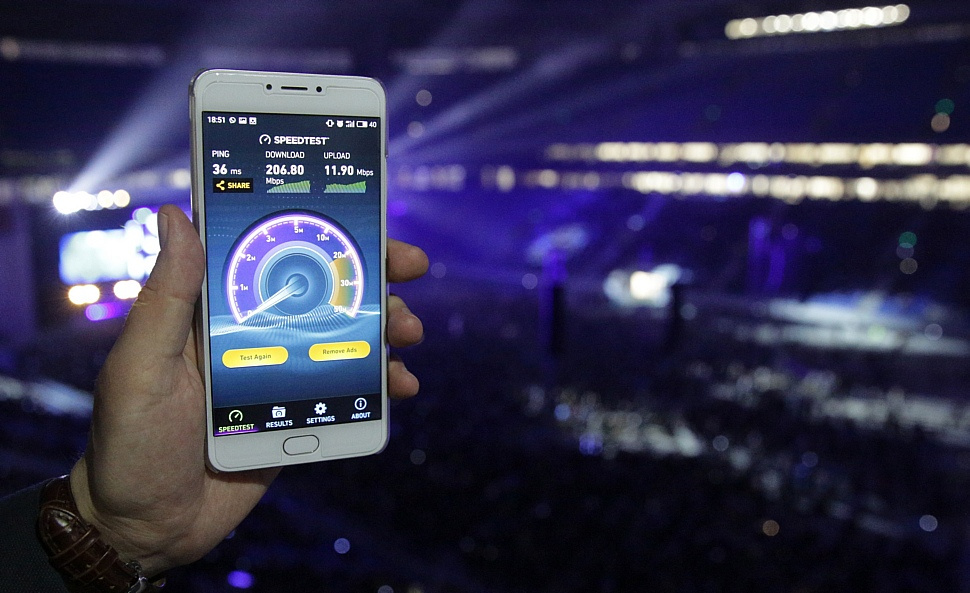
Together with the construction of stadiums, hotels and other facilities required for the World Cup (and the confederations involved for the Cup) in football, the organizers took care to prepare the telecommunications infrastructure for the needs of the broadcasters, the organizers themselves and, of course, the guests of the event. At the same time, many parameters of the necessary infrastructure were determined by the requirements of FIFA, which are also relevant for the next year’s World Cup.
In February of this year, the customer of the project - the National Center for Informatization, a subsidiary of the sole executor for the Rostec Group project appointed by the Ministry of Communications, announced a tender, according to the results of which our company became the contractor for the deployment of telecom infrastructure. The project cost exceeded 4 billion rubles.
')
Confederations Cup - a kind of "training" before the 2018 World Cup. Participants - eight prefabricated countries from different parts of the Earth. At the same time, some of them are far from being favorites of world football, therefore (according to statistics) the stadiums were not filled at all by 100%. Only 16 matches at 4 stadiums (the maximum distance between which is more than 2 thousand km) gathered about half a million spectators.
Obviously, the World Cup will be a much larger event, but the past Cup allowed assessing the readiness of the main sports and infrastructure facilities in four key (participating in) cities: Moscow, Kazan, St. Petersburg and Sochi.
It should be noted that MegaFon has repeatedly participated in the preparation of major sporting events. Our company provided communication during the draw of the Confederations Cup in 2013, at the Universiade in Kazan in 2016, the Olympic Games in Sochi in 2014, the World Hockey Championship in 2016, as well as during a number of other major sporting and political events. Each time we reconstructed the network segment serving the facilities involved and the infrastructure adjacent to them (main communication channels, networks in hotels, transport, etc.). Moreover, major sporting events have repeatedly become the place for testing new IT projects - the heightened interest of viewers to the event in this case plays into the hands of technology development. For example, at the Olympic Games in Sochi in 2014, the 4G network was first earned, and as part of a test match with Belgium, which preceded the Cup, this spring, Russia's first active distributed antenna system for a football stadium with a capacity of 45 thousand spectators was tested.
An integrated approach to the organization of the entire infrastructure and interaction with subscribers also played in our favor. In addition, it was beneficial for the organizers to transfer the project into one hand in order to eliminate the problems of interaction between departments of different companies.
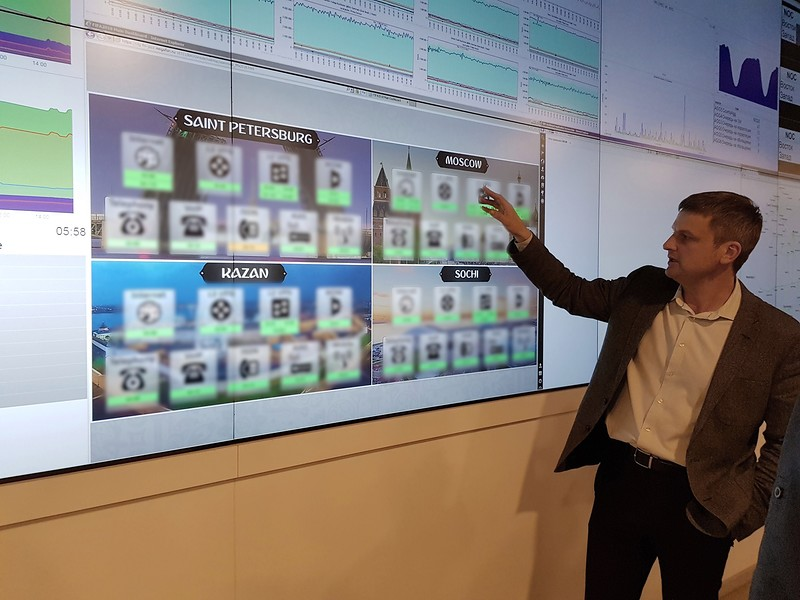
Information screen in the network management center with a summary of the sports facilities of the Confederations Cup. Photo: bathet.livejournal.com
However, even for us, the Confederations Cup was the first project with so much distributed geography, so many issues had to be solved at the start - from technical to administrative.
Under the terms of the contract, the organizers and guests of the Confederations Cup we had to provide the infrastructure for fixed and mobile services and technical support directly during the event. At the same time, the project provided for quite strict SLA requirements.
We assembled a distributed project team, which included employees of various regional divisions of MegaFon, and formed a separate division that was supposed to deal only with this project. The coordination center of the project is located in St. Petersburg, but the work was carried out in four cities that hosted the Confederations Cup matches - St. Petersburg, Moscow, Kazan and Sochi.
Many stadiums and training bases, which will be involved in the World Cup, were reconstructed for large flows of spectators. Following had to reconstruct the core network for the provision of services - the existing one simply could not cope with the predicted loads. At the same time, taking into account the explosive growth of traffic in recent times, transformations have been required even in Sochi, where in 2014 a completely modern infrastructure was already deployed.
The project affected many carrier systems, but trunk lines and a radio access network were particularly seriously affected.
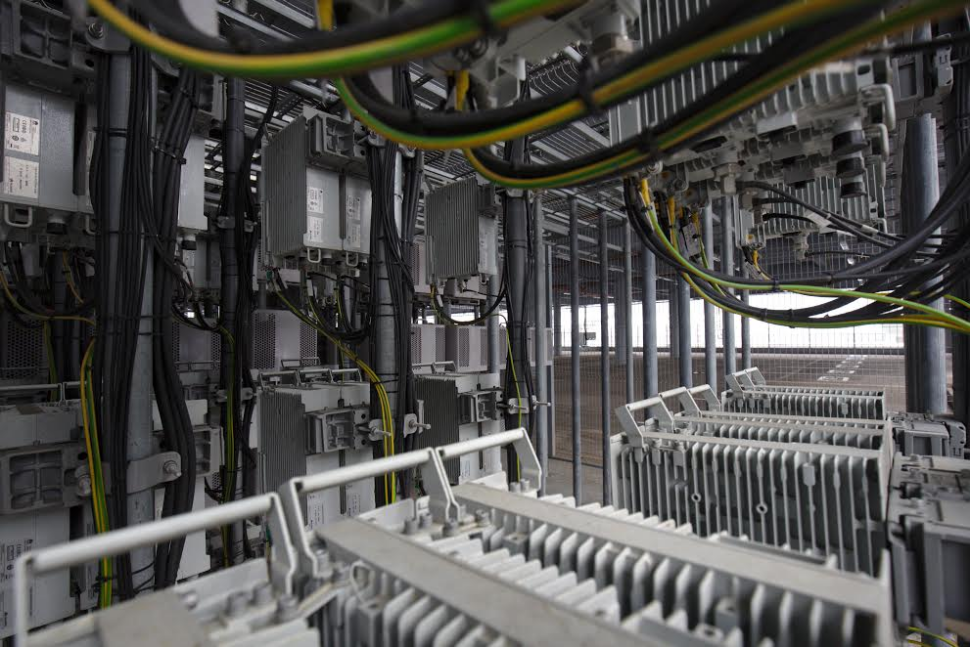
Network equipment at the stadium St. Petersburg
First of all, we expanded and reserved the existing trunk lines (with the expectation of almost 100% occupancy of sports facilities and triple reservation). Based on the previously deployed infrastructure in the segments serving the objects of the Confederations Cup, a geographically distributed DWDM network was built with independent elements and a total length of fiber lines of about 11 thousand km. The network topology allows in case of failure of part of the lines or equipment to quickly transfer traffic to other elements.
Of course, all these transformations were needed not only so that fans from all over the world could post pictures from the stadium on Instagram. The key objective is the organization of uninterrupted TV broadcasting in 4K-quality from stadiums over long distances - to the International Broadcasting Center, located in St. Petersburg.
For live broadcasts from participating cities, we have made 100 Gb / s backbone fiber-optic lines. In addition, we organized dedicated L2 channels and fully connected VPN networks.
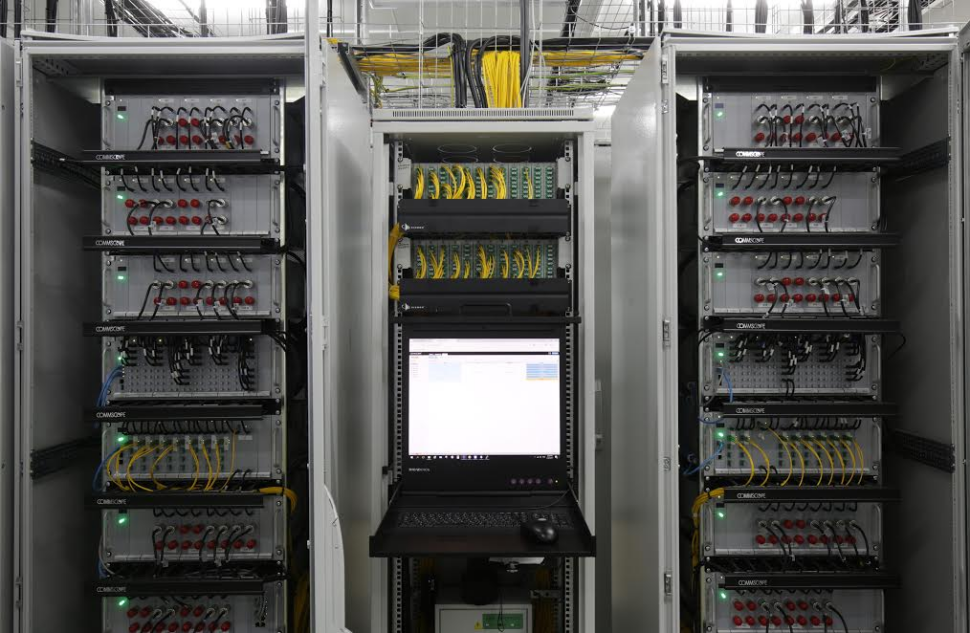
As part of the reconstruction of the mobile segment, we installed about 1500 new antennas, including modern distributed systems. One of them, together with Huawei, we assembled at the Fisht stadium in Sochi. There we (for the first time in the world) tested a distributed antenna system based on Single DAS 2.0 (Huawei) equipment, which is characterized by low power consumption and flexible remote control capability and allowed us to provide high-quality voice and data services in 2G / 3G / 4G standards for maximum available speed.
We also installed new equipment that improves coverage, including indoors. The works were carried out at 82 sites - not only at stadiums, but also at training bases, at transport hubs, at ticket sales points, hotels, etc. (in ¾ of these objects, we had to deal separately with improving the indoor coverage). In hard-to-reach places, micro- and picoBS (Small Cells) were used, which are easier to install due to small dimensions.
The transformations affected not only the objects involved in the organization and holding of the Confederation Cup, but also the surrounding area (training fields, entrances, technical premises and pavilions, parking lots).
To maintain network availability, i.e. increasing its capacity and resiliency, at peak times during important matches, we actively used mobile base stations - where it was impossible to build stationary base stations.
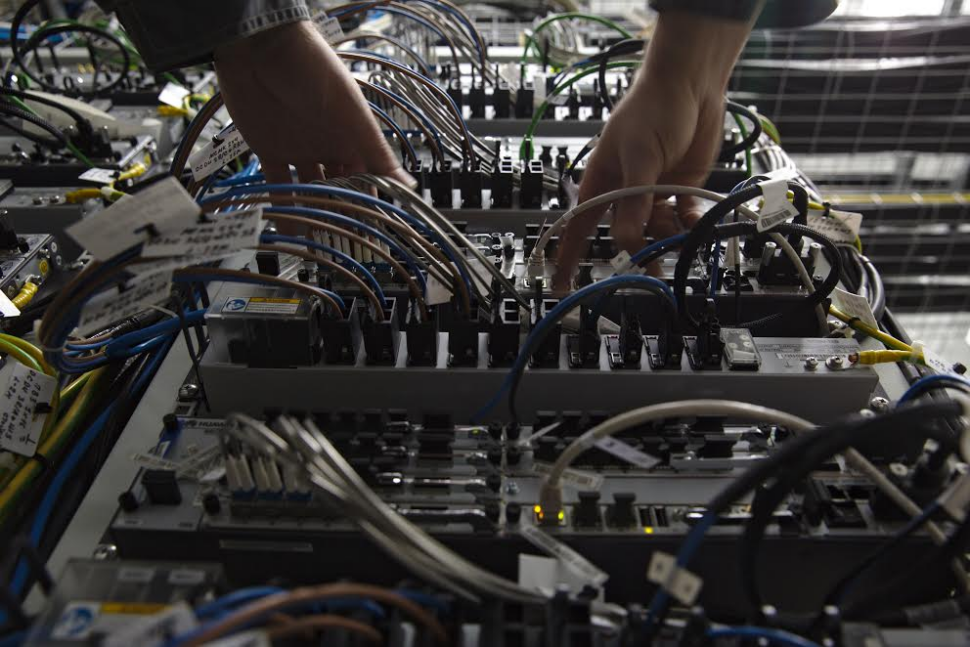
At the same time, we used special network settings focused on mass events and adapted for large volumes of voice traffic and packet data. Settings allow you to redistribute the load between the various elements of the network, thereby maintaining the high quality of service even at peak times. Moreover, depending on the conditions, the parameters can be adjusted directly during the event.
At some sites, for example, at the stadiums in St. Petersburg, Sochi and Kazan, the deployed infrastructure made it possible for several telecom operators to work simultaneously (and using the standards of all generations) —the equipment of our colleagues was integrated into the created network at the preparation stage of the event.
By the way, the most complex and powerful system designed for a load of 80 thousand people (not only in the stadium bowl, but also in the adjacent territories) was created just at the St. Petersburg Arena. Its operability is provided by 800 different signal combining devices and 450 antennas. To connect the system, about 40 km of cables were laid and a separate equipment room of 250 square meters was mounted.
The deployed system coped with the load, despite the fact that during the match with Russia (Russia - New Zealand), the fans set a record by pumping over 3,800 GB of our network (at the same time, the network processed 11,500 hours of voice communication).
Traffic during matches beat records in other cities. For example, a comparison of voice and packet traffic at the stadium in Kazan, where the Cup games took place on June 18, 22 and 24:
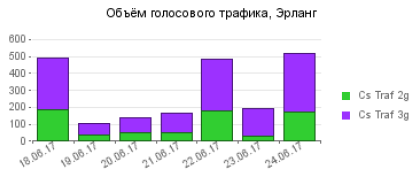
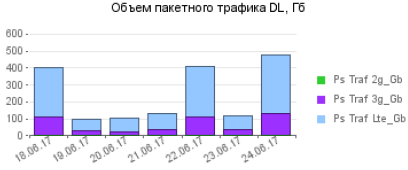
Not only network segments serving stadiums, but also transportation and accommodation facilities faced increased load. Anticipating this, in some hotels we deployed passive distributed antenna systems (Passive DAS).

Network speed measurements during one of the Confederations Cup matches
We were quite confident in the capacity of our infrastructure, so we even offered to the guests of the Cup a separate #Hello tariff with prepaid Internet at maximum speed (fans could use 4G Internet at all stadiums participating in the Cup).
The whole complex of equipment and software of the infrastructure involved at the MegaFon event (and at the same time the life support systems of each of the communication objects) was monitored in real time using its own Life Control solution. During the matches, load and quality indicators of mobile communication in the stadiums bowls were monitored. At the same time, protection against Dos / DDoS attacks was provided.
We should also mention technical support. Five days before the event, the technical support center began to work around the clock. A special automated system was deployed for on-line admission of appeals. We also organized a hotline for consulting and solving technical problems, working in Russian and English, and additional customer service points.
In all the participating cities, operational mobile brigades appeared, to which we tried to include specialists who had already “smelled gunpowder” during the Olympics, the SCO and BRICS summits.
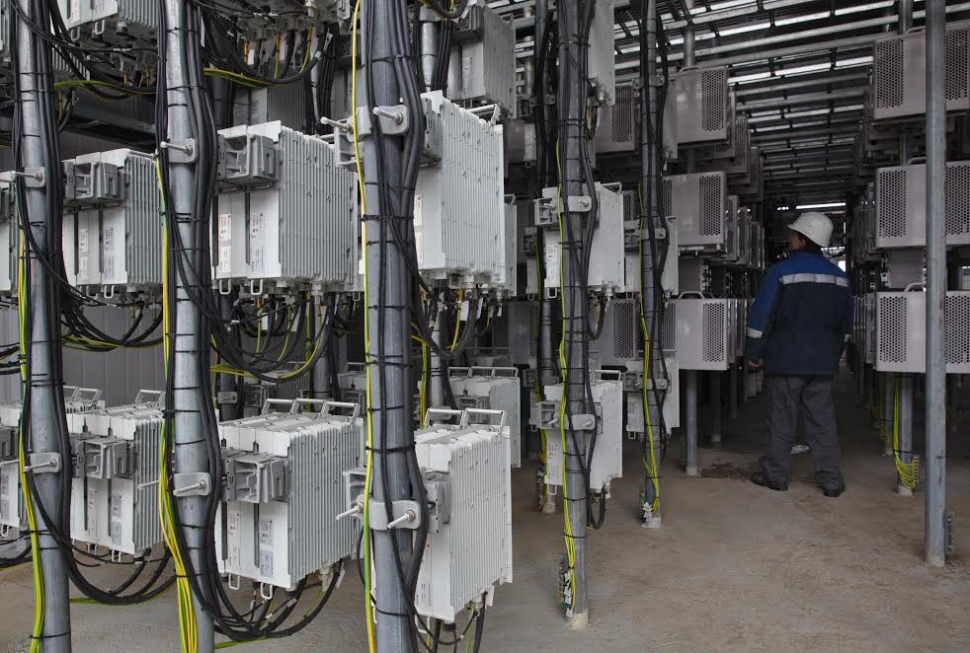
Network equipment at the stadium in St. Petersburg
We can say that the work we carried out has made the Confederations Cup one of the most technologically advanced sporting events in our country. And fans could feel it on "themselves".
Large-scale sporting events are no longer presented without discussions, broadcasts and reposts in social networks. And every year the amount of traffic generated by fans (viewers, visitors) is increasing: the quality of images (and, accordingly, their “weight”), the number of users who increasingly want to share their experiences online is also growing.
For three matches at the Discovery Arena stadium fans (and according to official figures there were slightly less than 110 thousand people - and every third was a Megaphone subscriber) about 7 TB of data was generated. If we present these volumes more clearly, then 7 TB is equivalent to 8 million selfies - about 72 shots per viewer - or more than 4 years of continuous broadcast on social networks.
In total, during the Confederations Cup, about 20 TB of data and about 2 million minutes of mobile conversations were generated by fans at all event sites. In this case, the leader in terms of traffic was the Instagram service. Fans broadcast live broadcasts via YouTube and Facebook, and communicated primarily through WatsApp.
Reconstruction of the network allowed us to additionally carry out several interesting projects. So, together with the OFD.ru fiscal data operator, we created “smart” cash registers with MegaFon SIM cards, which allow fans to save time when buying goods at the stadium due to quick calculations and the possibility of the seller with the terminal moving around the facility (that is, in fact the goods came to the fan - and not the fan spends time in the queue for the goods). The network operated smoothly, respectively, and the "smart box office" did not create additional problems for fans and retailers.
Even during the Confederations Cup, we conducted “combat” testing of VoLTE (this option can be connected to iPhone for free from the end of April 2017). There are high hopes for LTE regarding the future World Cup in general. The share of smartphones with LTE support among fans is likely to increase, respectively, it will be possible to seriously unload the 3G network. This will keep the network up and running even if stadiums are full.
In general, the project has been very successful. And the best proof of this is not only the numerous thanks of the organizers and admissions commissions, but also the absence of complaints about communications from Russian and foreign fans from both Russia and uninterrupted broadcasts of matches in high quality.
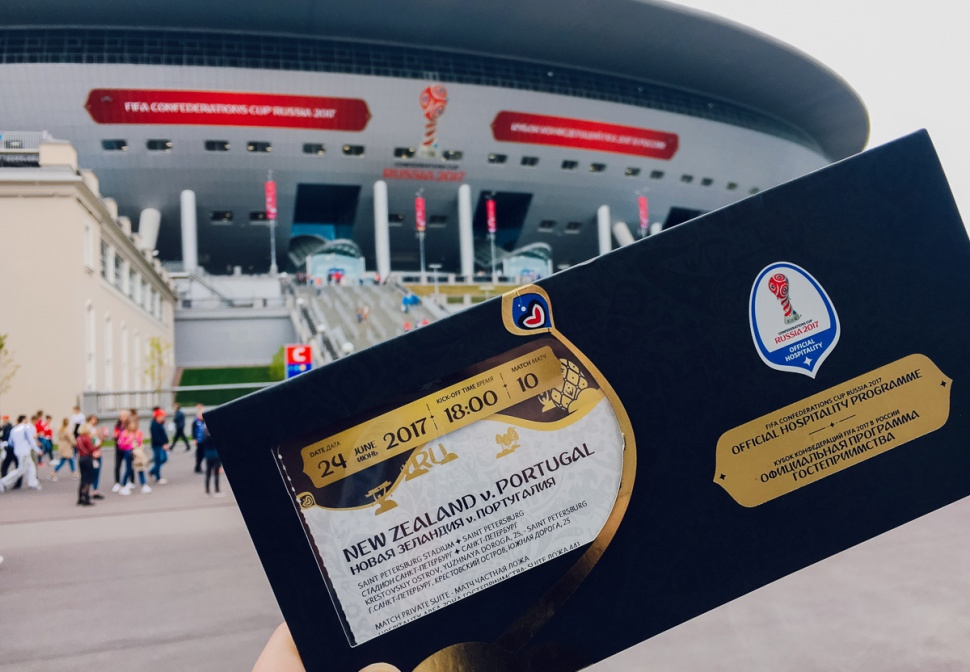
Ahead - work in the remaining seven cities, which will receive guests of the World Cup next year. In the near future, we will announce tenders for the supply of equipment and begin work on strengthening the teams in the field by specialists who have already gained experience in the Confederations Cup.
During the World Cup, we are planning to conduct additional testing of the 5G standard.

Together with the construction of stadiums, hotels and other facilities required for the World Cup (and the confederations involved for the Cup) in football, the organizers took care to prepare the telecommunications infrastructure for the needs of the broadcasters, the organizers themselves and, of course, the guests of the event. At the same time, many parameters of the necessary infrastructure were determined by the requirements of FIFA, which are also relevant for the next year’s World Cup.
In February of this year, the customer of the project - the National Center for Informatization, a subsidiary of the sole executor for the Rostec Group project appointed by the Ministry of Communications, announced a tender, according to the results of which our company became the contractor for the deployment of telecom infrastructure. The project cost exceeded 4 billion rubles.
')
About event
Confederations Cup - a kind of "training" before the 2018 World Cup. Participants - eight prefabricated countries from different parts of the Earth. At the same time, some of them are far from being favorites of world football, therefore (according to statistics) the stadiums were not filled at all by 100%. Only 16 matches at 4 stadiums (the maximum distance between which is more than 2 thousand km) gathered about half a million spectators.
Obviously, the World Cup will be a much larger event, but the past Cup allowed assessing the readiness of the main sports and infrastructure facilities in four key (participating in) cities: Moscow, Kazan, St. Petersburg and Sochi.
Why MegaFon?
It should be noted that MegaFon has repeatedly participated in the preparation of major sporting events. Our company provided communication during the draw of the Confederations Cup in 2013, at the Universiade in Kazan in 2016, the Olympic Games in Sochi in 2014, the World Hockey Championship in 2016, as well as during a number of other major sporting and political events. Each time we reconstructed the network segment serving the facilities involved and the infrastructure adjacent to them (main communication channels, networks in hotels, transport, etc.). Moreover, major sporting events have repeatedly become the place for testing new IT projects - the heightened interest of viewers to the event in this case plays into the hands of technology development. For example, at the Olympic Games in Sochi in 2014, the 4G network was first earned, and as part of a test match with Belgium, which preceded the Cup, this spring, Russia's first active distributed antenna system for a football stadium with a capacity of 45 thousand spectators was tested.
An integrated approach to the organization of the entire infrastructure and interaction with subscribers also played in our favor. In addition, it was beneficial for the organizers to transfer the project into one hand in order to eliminate the problems of interaction between departments of different companies.

Information screen in the network management center with a summary of the sports facilities of the Confederations Cup. Photo: bathet.livejournal.com
However, even for us, the Confederations Cup was the first project with so much distributed geography, so many issues had to be solved at the start - from technical to administrative.
Project itself
Under the terms of the contract, the organizers and guests of the Confederations Cup we had to provide the infrastructure for fixed and mobile services and technical support directly during the event. At the same time, the project provided for quite strict SLA requirements.
We assembled a distributed project team, which included employees of various regional divisions of MegaFon, and formed a separate division that was supposed to deal only with this project. The coordination center of the project is located in St. Petersburg, but the work was carried out in four cities that hosted the Confederations Cup matches - St. Petersburg, Moscow, Kazan and Sochi.
Many stadiums and training bases, which will be involved in the World Cup, were reconstructed for large flows of spectators. Following had to reconstruct the core network for the provision of services - the existing one simply could not cope with the predicted loads. At the same time, taking into account the explosive growth of traffic in recent times, transformations have been required even in Sochi, where in 2014 a completely modern infrastructure was already deployed.
The project affected many carrier systems, but trunk lines and a radio access network were particularly seriously affected.

Network equipment at the stadium St. Petersburg
Trunk channels
First of all, we expanded and reserved the existing trunk lines (with the expectation of almost 100% occupancy of sports facilities and triple reservation). Based on the previously deployed infrastructure in the segments serving the objects of the Confederations Cup, a geographically distributed DWDM network was built with independent elements and a total length of fiber lines of about 11 thousand km. The network topology allows in case of failure of part of the lines or equipment to quickly transfer traffic to other elements.
Of course, all these transformations were needed not only so that fans from all over the world could post pictures from the stadium on Instagram. The key objective is the organization of uninterrupted TV broadcasting in 4K-quality from stadiums over long distances - to the International Broadcasting Center, located in St. Petersburg.
For live broadcasts from participating cities, we have made 100 Gb / s backbone fiber-optic lines. In addition, we organized dedicated L2 channels and fully connected VPN networks.
Wireless connection

As part of the reconstruction of the mobile segment, we installed about 1500 new antennas, including modern distributed systems. One of them, together with Huawei, we assembled at the Fisht stadium in Sochi. There we (for the first time in the world) tested a distributed antenna system based on Single DAS 2.0 (Huawei) equipment, which is characterized by low power consumption and flexible remote control capability and allowed us to provide high-quality voice and data services in 2G / 3G / 4G standards for maximum available speed.
We also installed new equipment that improves coverage, including indoors. The works were carried out at 82 sites - not only at stadiums, but also at training bases, at transport hubs, at ticket sales points, hotels, etc. (in ¾ of these objects, we had to deal separately with improving the indoor coverage). In hard-to-reach places, micro- and picoBS (Small Cells) were used, which are easier to install due to small dimensions.
The transformations affected not only the objects involved in the organization and holding of the Confederation Cup, but also the surrounding area (training fields, entrances, technical premises and pavilions, parking lots).
To maintain network availability, i.e. increasing its capacity and resiliency, at peak times during important matches, we actively used mobile base stations - where it was impossible to build stationary base stations.

At the same time, we used special network settings focused on mass events and adapted for large volumes of voice traffic and packet data. Settings allow you to redistribute the load between the various elements of the network, thereby maintaining the high quality of service even at peak times. Moreover, depending on the conditions, the parameters can be adjusted directly during the event.
At some sites, for example, at the stadiums in St. Petersburg, Sochi and Kazan, the deployed infrastructure made it possible for several telecom operators to work simultaneously (and using the standards of all generations) —the equipment of our colleagues was integrated into the created network at the preparation stage of the event.
By the way, the most complex and powerful system designed for a load of 80 thousand people (not only in the stadium bowl, but also in the adjacent territories) was created just at the St. Petersburg Arena. Its operability is provided by 800 different signal combining devices and 450 antennas. To connect the system, about 40 km of cables were laid and a separate equipment room of 250 square meters was mounted.
The deployed system coped with the load, despite the fact that during the match with Russia (Russia - New Zealand), the fans set a record by pumping over 3,800 GB of our network (at the same time, the network processed 11,500 hours of voice communication).
Traffic during matches beat records in other cities. For example, a comparison of voice and packet traffic at the stadium in Kazan, where the Cup games took place on June 18, 22 and 24:


Not only network segments serving stadiums, but also transportation and accommodation facilities faced increased load. Anticipating this, in some hotels we deployed passive distributed antenna systems (Passive DAS).

Network speed measurements during one of the Confederations Cup matches
We were quite confident in the capacity of our infrastructure, so we even offered to the guests of the Cup a separate #Hello tariff with prepaid Internet at maximum speed (fans could use 4G Internet at all stadiums participating in the Cup).
Monitoring and support
The whole complex of equipment and software of the infrastructure involved at the MegaFon event (and at the same time the life support systems of each of the communication objects) was monitored in real time using its own Life Control solution. During the matches, load and quality indicators of mobile communication in the stadiums bowls were monitored. At the same time, protection against Dos / DDoS attacks was provided.
We should also mention technical support. Five days before the event, the technical support center began to work around the clock. A special automated system was deployed for on-line admission of appeals. We also organized a hotline for consulting and solving technical problems, working in Russian and English, and additional customer service points.
In all the participating cities, operational mobile brigades appeared, to which we tried to include specialists who had already “smelled gunpowder” during the Olympics, the SCO and BRICS summits.
results

Network equipment at the stadium in St. Petersburg
We can say that the work we carried out has made the Confederations Cup one of the most technologically advanced sporting events in our country. And fans could feel it on "themselves".
Large-scale sporting events are no longer presented without discussions, broadcasts and reposts in social networks. And every year the amount of traffic generated by fans (viewers, visitors) is increasing: the quality of images (and, accordingly, their “weight”), the number of users who increasingly want to share their experiences online is also growing.
For three matches at the Discovery Arena stadium fans (and according to official figures there were slightly less than 110 thousand people - and every third was a Megaphone subscriber) about 7 TB of data was generated. If we present these volumes more clearly, then 7 TB is equivalent to 8 million selfies - about 72 shots per viewer - or more than 4 years of continuous broadcast on social networks.
In total, during the Confederations Cup, about 20 TB of data and about 2 million minutes of mobile conversations were generated by fans at all event sites. In this case, the leader in terms of traffic was the Instagram service. Fans broadcast live broadcasts via YouTube and Facebook, and communicated primarily through WatsApp.
Reconstruction of the network allowed us to additionally carry out several interesting projects. So, together with the OFD.ru fiscal data operator, we created “smart” cash registers with MegaFon SIM cards, which allow fans to save time when buying goods at the stadium due to quick calculations and the possibility of the seller with the terminal moving around the facility (that is, in fact the goods came to the fan - and not the fan spends time in the queue for the goods). The network operated smoothly, respectively, and the "smart box office" did not create additional problems for fans and retailers.
Even during the Confederations Cup, we conducted “combat” testing of VoLTE (this option can be connected to iPhone for free from the end of April 2017). There are high hopes for LTE regarding the future World Cup in general. The share of smartphones with LTE support among fans is likely to increase, respectively, it will be possible to seriously unload the 3G network. This will keep the network up and running even if stadiums are full.
In general, the project has been very successful. And the best proof of this is not only the numerous thanks of the organizers and admissions commissions, but also the absence of complaints about communications from Russian and foreign fans from both Russia and uninterrupted broadcasts of matches in high quality.

Ahead - work in the remaining seven cities, which will receive guests of the World Cup next year. In the near future, we will announce tenders for the supply of equipment and begin work on strengthening the teams in the field by specialists who have already gained experience in the Confederations Cup.
During the World Cup, we are planning to conduct additional testing of the 5G standard.
Source: https://habr.com/ru/post/334022/
All Articles